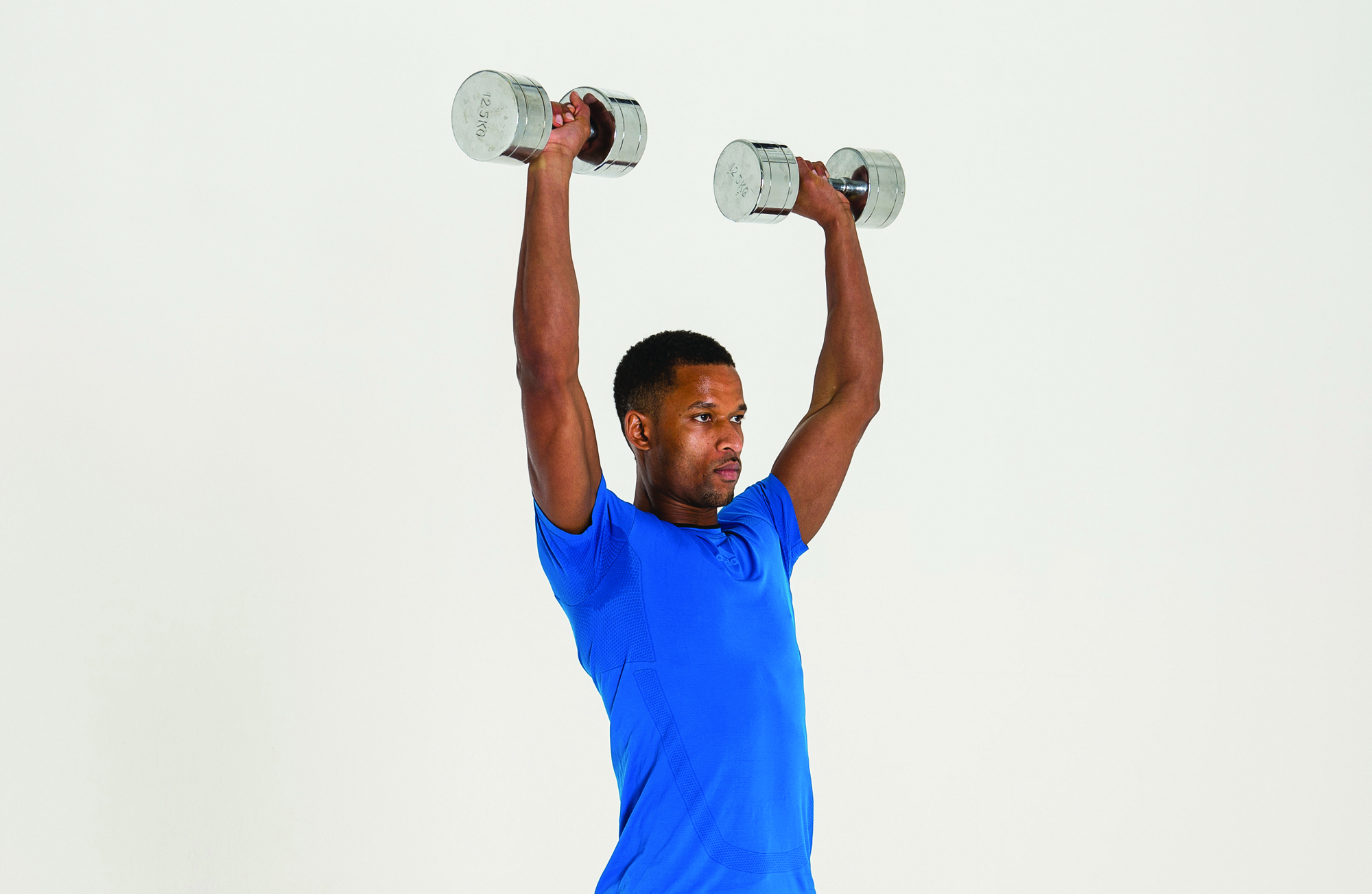Most common weightlifting injuries
Here are the most common weightlifting injuries and how to avoid them, explained by physiotherapist Cameron Tudor

Most gym related injuries are due to one of two things: poor technique and failure to gradually increase loads. One common example of how things go wrong is introducing kettlebell swings too early into a back-strengthening programme. Most weightlifting injuries can be avoided, but after treated sports and gym related injuries for almost two decades, I continue to see fitness programmes ruined by injuries that can easily be avoided. Here are three of the most common and some simple tips to help avoid them.
Shoulder impingement
What it is: A ‘squeezing’ or irritation of the rotator cuff tendons under the bone at the point of your shoulder (the acromion).
How it's caused: Under the acromion, there is about 1cm of space for the rotator cuff tendons to slide through. When this is narrowed, it irritates the tendons. The three things that commonly lead to reduced sub-acromial space are a lack of shoulder blade and rotator cuff control, poor lifting technique, and a stiff middle back (thoracic spine).
What the symptoms are: Pain at the front or side of your shoulder, particularly when doing shoulder presses, incline bench presses and upright rows.
How it's diagnosed: A good physio will diagnose it easily using simple impingement and scapula control tests. Occasionally they may arrange a scan to look for changes in bone shape or tendon health.
What the treatment is: When shoulder impingement is diagnosed correctly, the rehab program will focus on improving scapula control and rotator cuff activation (keeping the ball snugly in the socket). Once the scapula position and control are corrected, the shoulder pain usually disappears.
Prehab treatments: My top tip for preventing shoulder injuries in the gym: make sure you can see your hands. If you can’t, then your shoulder is probably in a vulnerable position. Unless you are weight training for a specific task – baseball pitching, for instance – then consider whether you need to put your shoulder in these positions. This rules out a few exercises, such as behind-the-neck presses, but in the long term your shoulders will love you.
Sign up for workout ideas, training advice, reviews of the latest gear and more.
Lumbar disc prolapse
What it is: Between your vertebrae are shock absorbers called intervertebral discs. Within each disc is a toothpaste-like structure called the nucleus. Overload can cause the nucleus to protrude out of the disc, causing nerve compression and sciatica (burning leg pain).
How it’s caused: While our ancestors spent much of their time hunting, todays lives are more sedentary. In particular we spend too much time sitting – an activity that increases disc pressures in the lower back by 50% (or up to 100% if slouched). As a result many people head to the gym with their discs already under strain. If they then perform a kettlebell swing, deadlift or squat incorrectly, the disc can prolapse.
What the symptoms are: Back pain, buttock pain and even leg pain. Pain when coughing and sneezing is common. In more severe cases there can be strength and sensory loss.
How it's diagnosed: Most disc injuries are diagnosed in clinic using a few simple tests, but can be confirmed with MRI.
What the treatment is: Exercise to help offload the injured disc, improve lumbar posture and specifically strengthen the surrounding musculature.
Prehab treatments: Before performing exercises that load the spine, spend ten minutes walking on a treadmill or a few minutes lying on your front while propped on your elbows. This reverses the direction of disc pressure. It’s also worth spending some time acting like our ancestors - monkeys and fish. Climbing and swimming are two of the best de-compressive type exercises for the spine, and are great cross-training exercises for the whole body.
Patellofemoral maltracking
What it is: A shifting of the kneecap (patella) as the leg bends or straightens, often because of muscle imbalance.
How it's caused: Your kneecap sits within a groove at the bottom of your thigh bone (femur). This is the patellofemoral joint (PFJ). It is controlled by the quadriceps, but when there is overload or muscle imbalance the patella can ‘track’ off its groove, causing irritation and inflammation.
What the symptoms are: Pain when climbing stairs or doing squats, lunges or leg presses. It is also common among runners and cyclists.
How it's diagnosed: PFJ maltracking is normally diagnosed without needing to resort to expensive tests. Scans are usually normal, but a good physio assessment of the PFJ – including muscle balance tests - will usually uncover the cause of the problem.
What the treatment is: Rehab, rehab, rehab. Around 90% of cases are due to one of three problems: foot pronation, weakness of the inner quadriceps (VMO) and gluteals, or an overly tight ITB (iliotibial band, a tendon-type band on the outside of the thigh). Specific rehab to correct these problems is successful in most cases.
Prehab treatments: Avoid taking your squats beyond 90˚ of knee bend. There are only a few athletes that require deep squat strength. If you’re not one of them, there’s no need to overload the knees. And stretch your calves. Tight calves contribute to foot pronation, which contributes to PFJ maltracking. Stretch three times per day, holding stretches for 30-60sec.
Cameron Tudor is clinical director of West London Physiotherapy
Nick Hutchings worked for Men’s Fitness UK, which predated, and then shared a website with, Coach. Nick worked as digital editor from 2008 to 2011, head of content until 2014, and finally editor-in-chief until 2015.
